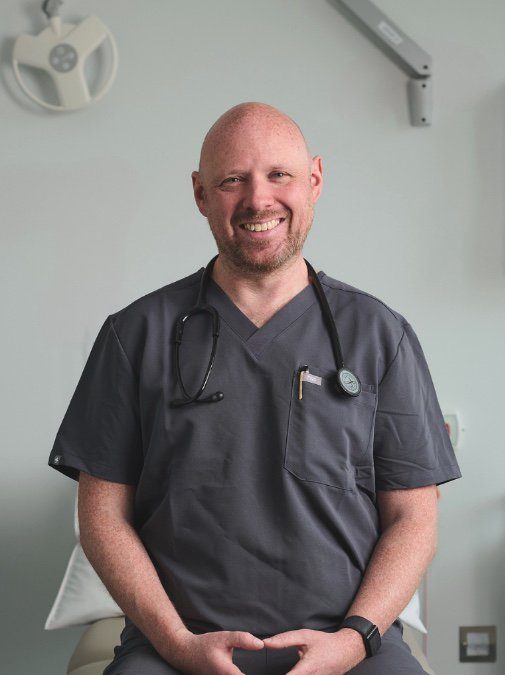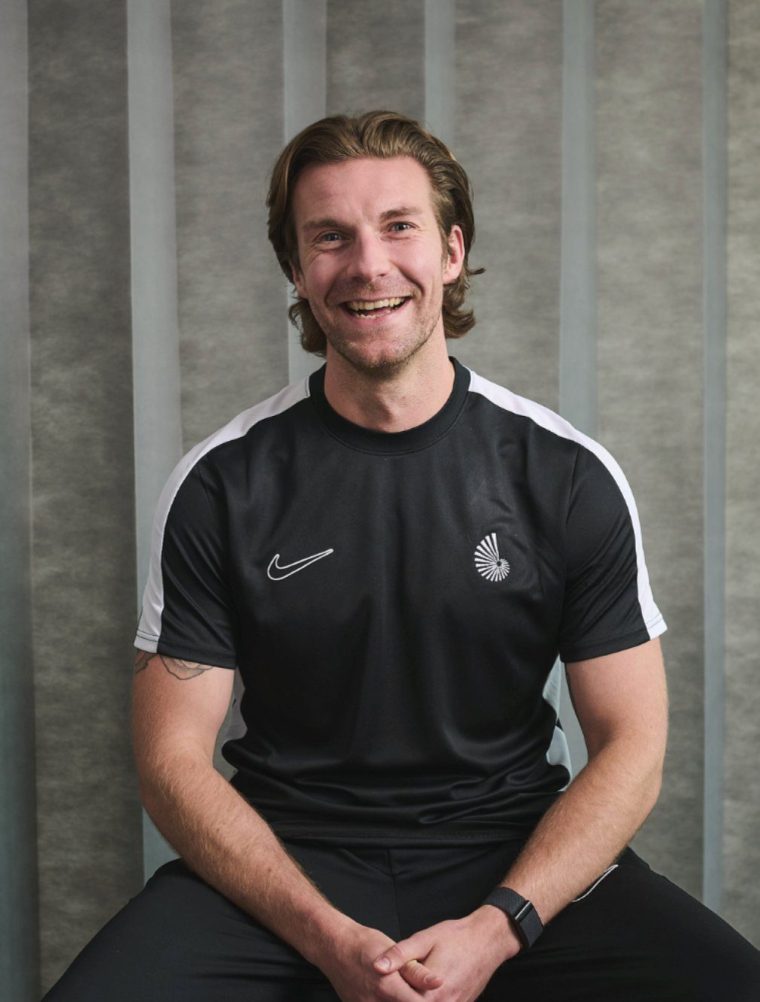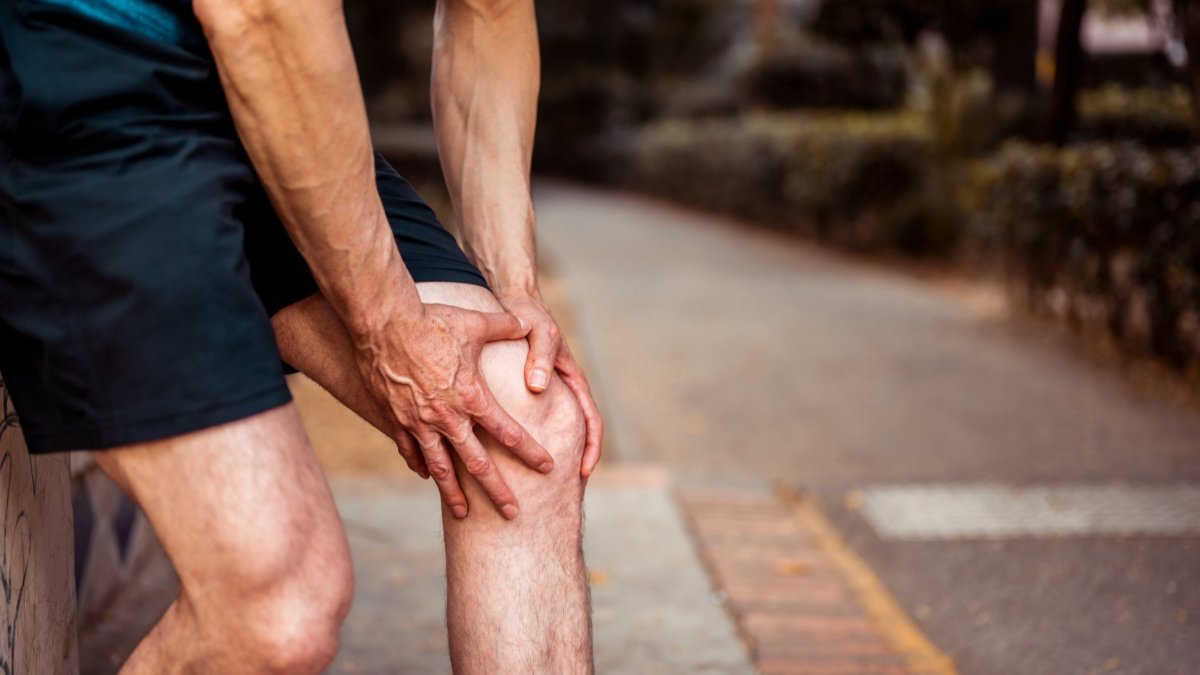Running and lifting weights can take their toll on knees and ankles – here the experts advise on how to avoid it
We all get aches, pains and niggles but it’s hard to know if it’s a minor problem that will pass with rest or if you need to seek medical help. We asked the experts everything about joint pain, from how to avoid it in everyday life, to what steps to take if aches aren’t going away.
Who can get joint pain?
“A lot of people immediately think of arthritis and wear and tear when it comes to joint pain, but we know more about it now,” says Dr David Porter, a sports medicine physician at Opus Biological. It can depend on what your lifestyle is like, what medical conditions you have and genetic components. People think you’re more likely to get wear and tear if you’ve worked on a building site or doing a sport like rugby, but that’s just not the case.
“People with diabetes, people that are obese or have sedentary lifestyles are more likely to get arthritis and joint pain.”
Controlling your weight and staying healthy is an important factor to reduce risk. Porter has many clients come to him who have been told to lose a substantial amount of weight in order to ease the pressure off the joints.
“What I say to most people is that if they lose one kilogram, it’s the equivalent of four kilograms at each knee. It’s the biomechanical loading, the physicals, of the load going through that joint. When you lose a kilogram you feel the difference in your knee, hip, ankle joints or your lower back.”
 Sports medicine physician David Porter says weight control is important when it comes to protecting the joints (Photo: Opus Biological)
Sports medicine physician David Porter says weight control is important when it comes to protecting the joints (Photo: Opus Biological)
A sedentary lifestyle is a big issue that Cameron Harris, who has been a personal trainer for nearly 20 years, sees with his clientele, who are typically entrepreneurs or businessmen who sit in an office a lot. “Imagine a 45-year-old person who works in an office for 10 hours a day. Their glutes and abs are disengaged and your body starts to switch those muscles off. If you try to run you’re not ready for it, and if you try to squat the form won’t be good.”
As we age, it can become more common to experience joint pain. As well as the wear and tear element that’s traditionally thought of, the accumulation of bad sleep and diet can add up over the years and contribute to aches or sluggishness in the body.
The best and worst exercises
“There’s no particular exercise that can cause joint pain alone, it’s a case of asking if the person is strong enough and well conditioned enough to do the level of exercise that they’re doing,” says Ian Gilham, a physiotherapist at Opus.
Weight training is great – if done properly
A classic issue Gilham sees is people lifting too heavy in the gym, when they don’t have the base strength they need. The gym can be great for strengthening muscles around a joint, which in turn will help but the form needs to be correct and exercises executed properly. “People don’t realise that strength and resistance training is good for joints as long as it’s within safe confines and training safely. It increases the blood supply to the bone cartilage and tissue and keeps them healthier for longer,” adds his colleague Porter.
The experts recommend seeing a personal trainer or physiotherapist before starting any form of new exercise as they’ll be able to show you how to perform exercise without injuring yourself.
The load in the gym is also important. Putting your body under heavy machinery or dumbbells can take its toll on joints, especially if they aren’t yet strong enough to cope with it. Instead of jumping up in the amount of weight you’re lifting, Porter says to increase weights by two to five kilograms (maximum) a week.
Running can be problematic
Running is a huge issue the experts see, especially when it causes runner’s knee or problems with the ankles. Running on a treadmill or grass can help, as it breaks some of the landing, and avoiding paved surfaces which have more impact on the joints is better, says Porter.
Harris says 70 per cent of the people he sees have lower body pain due to running as it’s so impactful. “Often what happens is people get two or three weeks of impact, feel great, like a runners high, but then they start to get knee pain and hip pain. Running is advertised as the greatest tool in the world, it’s free but the downside is you will break down if your body isn’t used to it. Walking is the effective middle ground because you can get all the benefits, while the chance of injury is reduced.”
Swimming and gentle stretching are best
Porter recommends getting in the pool instead. “Swimming would be my number one recommendation to anyone that wants to continue to exercise and wants to reduce the or mitigate the amount of pain they might get from a joint,” he says. Other ones he mentions are cycling on a static bike, or walking on a treadmill. Yoga and pilates are also great for “proprioception – a fancy doctor’s way of saying the balance within a joint”.
Gentle stretching is great to do to “improve the joint lubrication,” says Porter. ”You’re keeping the joint moving so it’s not getting stiff and it’s less likely that you’re going to get swelling. It keeps muscles activated and strong.” He warns not to go outside of the usual range of motion of a joint though (you may feel discomfort or pain), which can cause damage or injury.
 Physiotherapist Ian Gilham sees a lot of issues after people lift too heavy in the gym (Photo: Opus Biological)What to do if you have joint pain
Physiotherapist Ian Gilham sees a lot of issues after people lift too heavy in the gym (Photo: Opus Biological)What to do if you have joint pain
The first thing to do, according to Harris, is drink more water. “A dehydrated body is like a rusty gate. It’s got no movement. The more hydrated you are, the more everything flows.”
He also puts a strong emphasis on warming up before a workout, especially the hips and knees by doing dynamic movements like leg swings and kickbacks. “All of this provides extra movement around the hip, it opens them up and starts getting lubrication to the joint. Most people don’t have the mobility in their hips that they think they do.” If you have come from a static position, sitting in an office for example, Harris says you should spend at least 15 minutes warming the body up.
Gilham agrees, and says as well as getting the heart rate up (which is what a warm up is for) you need to prepare the body for the movement it’s about to do.
He sees knee pain more than anything else in the clinic, and strengthening the muscles around the knee, like the calf, hamstring, quad and glute will help.
Thinking about how to help pain can come from everyday life too, not just exercise. “Try to carry the shopping equally between hands to avoid imbalances. Really simple things like that can help. Make sure you’re laying in bed in a comfortable position and not waking up with neck pain. Address your mattress, make sure it’s right for you.”
He also says to have consistency, but ultimately, time is a healer. Gilham says: “The beauty of the body is that time helps and it’s normal to get aches and pains every now and then. The problem is sharp pains and swelling. If it lasts for more than 48 to 72 hours, and it’s not improving, it’s time to consult a medical professional.”

